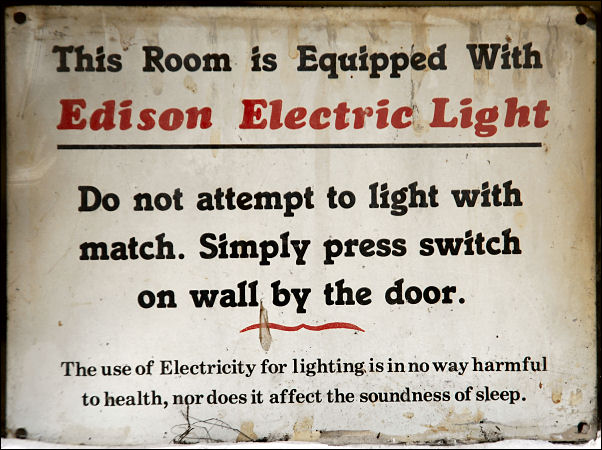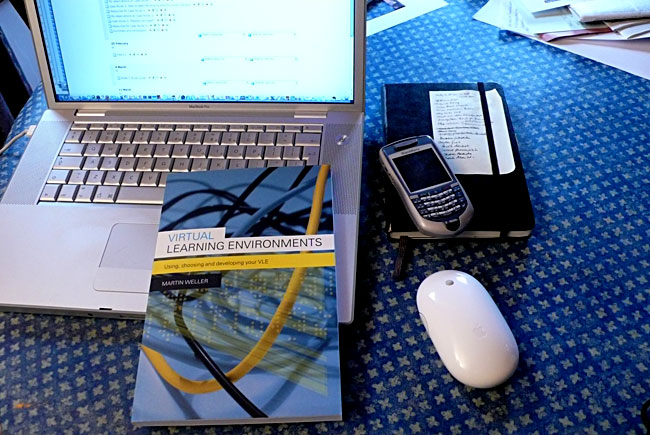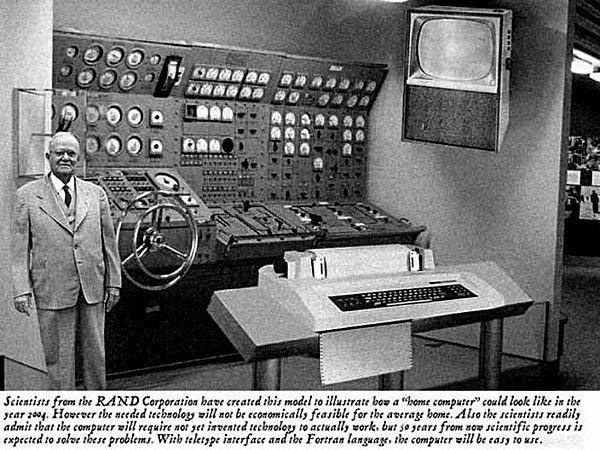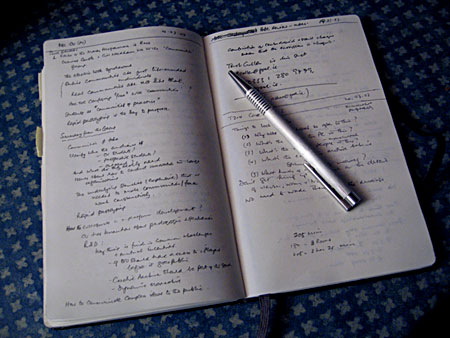It gets worse. Here’s the latest remix…
Thanks to Rex, our local YouTube correspondent!

It gets worse. Here’s the latest remix…
Thanks to Rex, our local YouTube correspondent!
You may recall that I liked the YouTube video which mixed the 1984 Apple Macintosh Superbowl ad with Hilary Clinton’s “our conversation” video. Well, Rex Hughes has now pointed me at the next instalment of the story. Read on…
News watchers need to buckle up today as the mainstream media does its whipsaw thing now that the identity of the infamous anti-Hillary Clinton/pro-Barack Obama “Vote Different” video has become publicly known – and that man is now out of a job. The ad, a take-off on Apple’s legendary “1984” spot, had become a YouTube sensation and the guessing game over the author an online parlor game. (Note string of updates below)
For those who haven’t seen it, the anti-Clinton ad, while unflattering, is reasonably clever, not the least bit offensive, and, by modern-day standards, more of a love note than a Swift-boating. … But, as we’re seeing, none of that matters in a practical, political sense.
Phil De Vellis, a political operative at Blue State Digital (the company name tells you what party’s candidates it serves), has been outed as the ad’s designer, and, depending on which account you wish to believe, has resigned or been fired because his employer’s most prominent client is presidential candidate Obama. He claims he did it on his own time and without the knowledge of Blue State Digital or the Obama campaign. You can read more of what De Vellis has to say for himself here on the Huffington Post.
So why all the fuss?
This is high-stakes presidential politics and everybody has a well-defined role to play.
Clinton feigns outrage because that’s her role. She’s been in politics all of her adult life and is no more outraged by that video than her husband was believable when wagging his finger. She does, however, recognize opportunity when it knocks and this video is an opportunity for her to play the victim … and no doubt attempt to inoculate herself against what promise to be truly vicious assaults to come.
Obama feigns outrage because that’s his role. He may be newer to politics, but he’s smart enough to recognize the risks – such as they are – of having his campaign appear to be “attacking” a fellow Democrat. The senator may indeed prefer that his campaign not be associated with such a video, but you can be certain that is a tactical decision and not an intellectually honest assessment of the spot’s message or style.
De Vellis feigns resignation – and says he resigned – because that’s his role. Even if we take him at his word about the project being his and his alone, he knew full well what the consequences would be if he his identity should become public. With free speech comes consequences. He’s no naïf. Weep not for him.
The mainstream media knows its role here, too: Just fan the flames. There isn’t a reporter or pundit on the planet who honestly believes that ad was out of bounds. There isn’t a reporter or pundit on the planet who believes that Clinton or Obama might be genuinely outraged. (There may be a few who believe De Vellis a “victim,” but they haven’t thought it through.) But every reporter and pundit on the planet recognizes good political theater when they see it.
So, what should have happened, you might be asking.
Clinton should have watched the video and shrugged. Obama should have told his people to tell Blue State Digital to get a tighter grip on its employees. De Vellis should have shown reporters his slapped wrist, apologized for causing a client trouble, and gotten on with his career.
But this is presidential politics. Those roles aren’t in the script…
My instincts would be to hire Mr De Vellis. His skills are useful.

Boyd Harris sent me this lovely one, seen in a pub in Cumbria. As he observes, scares about new inventions have a venerable pedigree. I once had a conversation with the man who had been the chief architect for the old London County Council and he told me that some councillors had opposed the building of high-rise apartment blocks on the grounds that people who lived on the top stories would be short of oxygen!
From Reuters
SAN MATEO, California (Reuters) – A U.S. judge has thrown out a lawsuit challenging the fairness of how Web search leader Google Inc. calculates the popularity of Web sites in determining search results, court papers show.
In a ruling issued on Friday that came to light on Tuesday, Judge Jeremy Fogel of the U.S. District Court for the Northern District of California dismissed a lawsuit against Google by parenting information site KinderStart.
The judge also imposed yet-to-be-determined sanctions on KinderStart legal counsel Gregory Yu for making unsupported allegations against Google.
KinderStart sued Google in March 2006 alleging the Mountain View, California-based Internet company had defamed the site by cutting it from its Web search ranking system.
The Norwalk, Connecticut-based company, which features links to information about raising children, accused Google of violations of antitrust, free speech, unfair competition and defamation and libel laws.
In its suit, the company argued its site’s sudden demotion in March 2005 to a “zero” ranking in Google’s search system had severely harmed its business.
KinderStart had sought class action status on behalf of what is said were many other sites that suffered the same fate as Google fine-tunes Web site rankings in search results…
Nice to see that sometimes the law is not an ass.

My colleague Martin Weller’s new book is out. It’s a thoughtful and helpful guide to a tar-pit into which an increasing number of academic institutions have carelessly lurched. As coincidence would have it, my laptop is logged into our university’s Moodle server — i.e. our VLE system — though it’s difficult to make that out from the photograph. Martin’s Blog is here.

Just think: my Council Tax pays the salary of the genius who composes these exhortations. The irony is that this message is displayed around 8.30am, when traffic is effectively stationary on this particular stretch of suburban road.

My note about the death of John Backus sent James Miller hunting through his archives for this image, allegedly from a 1954 issue of Popular Mechanics. But the mismatch between the date of the image and the fact that Fortran wasn’t released until 1957 gave rise to a distinct smell of rodent, and he went Googling. It is, indeed, phoney. The anatomy of the hoax, however, is a good read.
I particularly like the guy in the suit: he reminds me of Dwight Eisenhower.
Here’s the underlying image on which the hoax was built.

This is just beautiful — a Flash animation of Tom Lehrer’s The Elements Song.

Quentin, like me (and thousands of other techies), uses a Moleskine notebook. But on a trip to the US recently, he lost his current one — which had only three blank pages left. And of course it wasn’t “backed up”. All of which has led to some sombre brooding in these parts. The dilemma is that, on the one hand, paper notebooks are by far the most user-friendly medium available for much of the work that even computer-obsessed professionals do. I hate opening up a laptop in a meeting or interview, for example: it seems a hostile act, somehow. On the other, paper notebooks are difficult to back up. (I suppose one could conscientiously photograph each two-page spread; but that would be tedious.) In characteristic form, Quentin is already thinking about solutions to the problem. Meanwhile I am beginning to understand why some colleagues — and of course Bill Gates — use tablet computers instead of notebooks. Problem is: they’re Windows boxes. Wonder if Apple will ever do a tablet…
Update… Here’s what Quentin thinks might be the basis of a solution. Watching this, I can see why he’s impressed.
John Backus, the creator of FORTRAN, the first high-level programming language, has died at the age of 82. He led the small team at IBM which produced the compiler and in the process enabled engineers and mathematicians to harness computer power without having to wrestle with machine code. Fortran (the name was an amalgam of ‘formula’ and ‘translation’) was released in 1957. It was the first programming language I learned as an undergraduate (working on an IBM 1401 mainframe). Nice Herald Trib obit here.